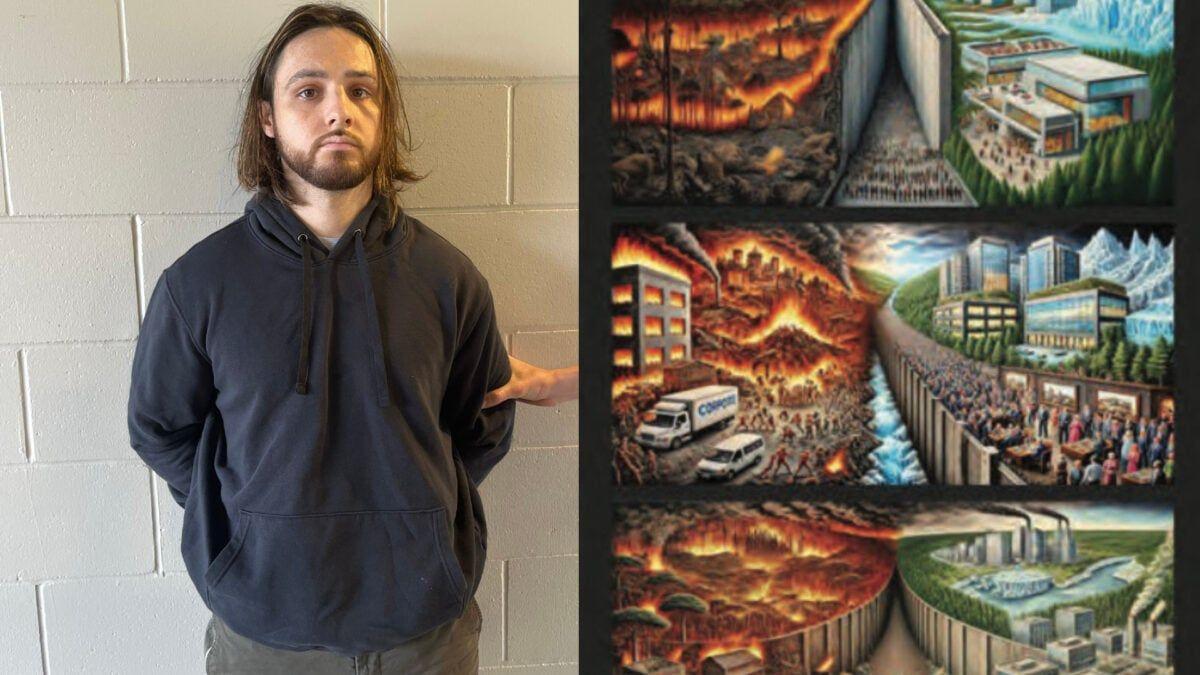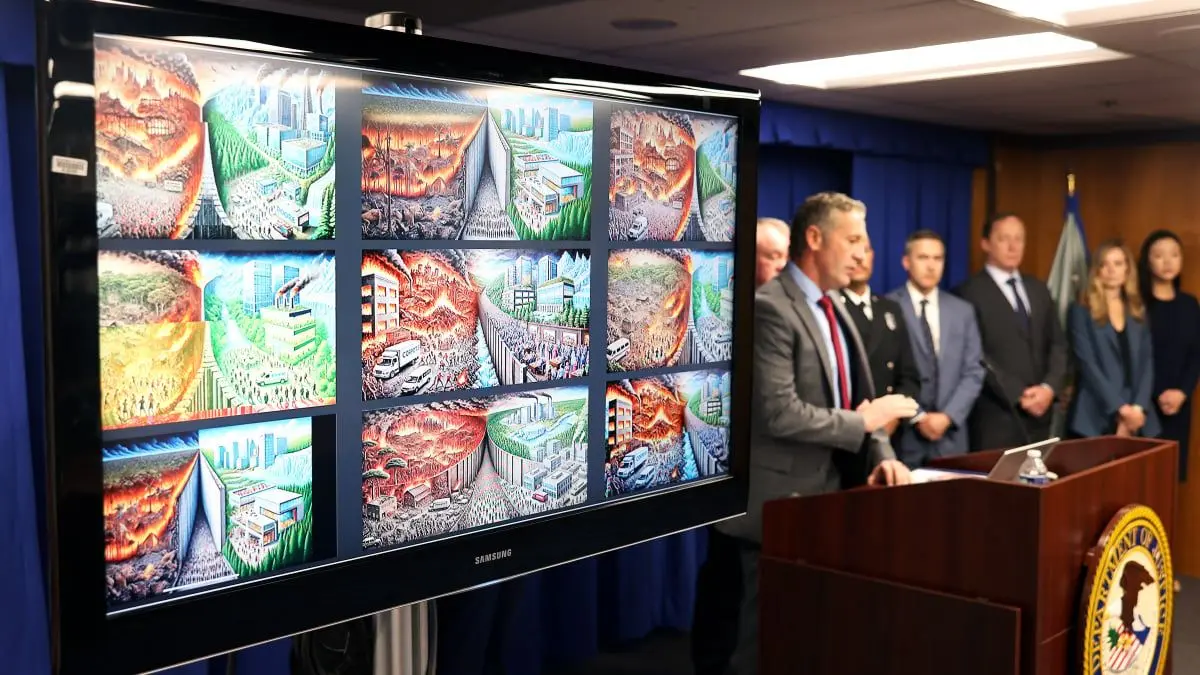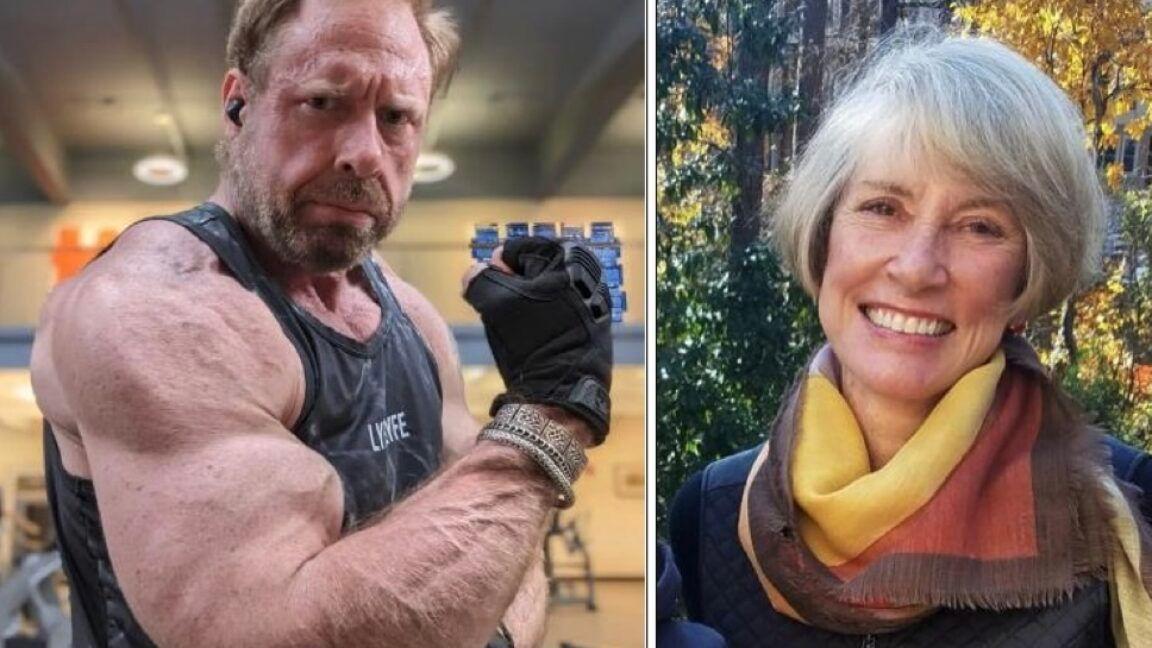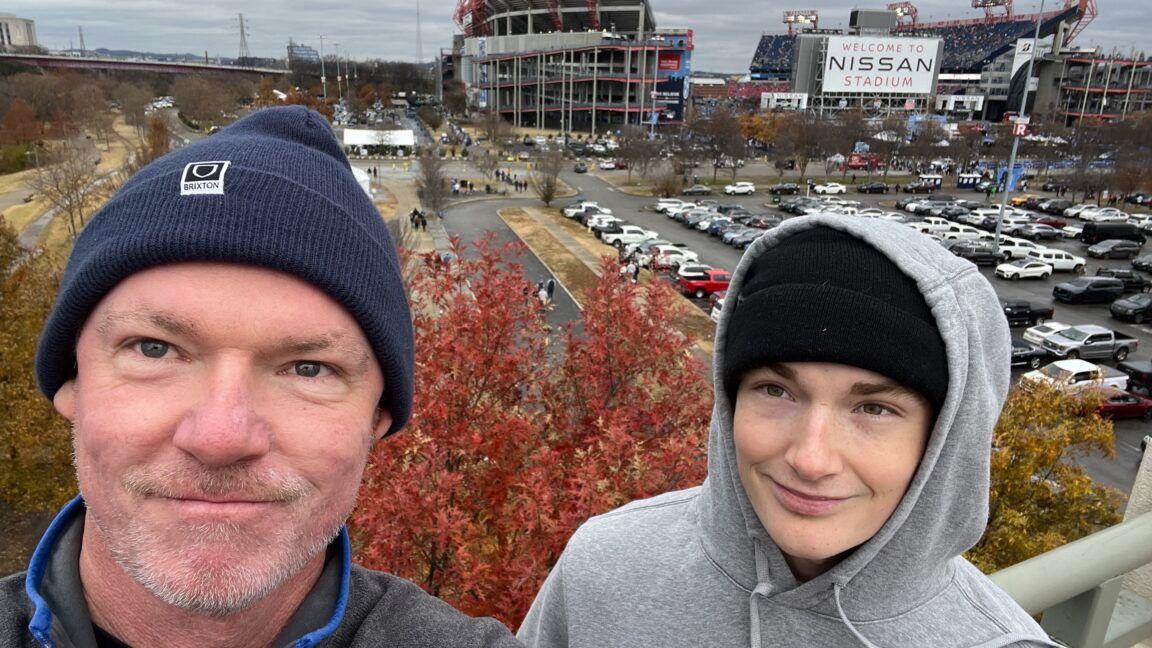ChatGPT Evidence Leads to Arrest in Deadly Palisades Fire Case
6 Sources
6 Sources
[1]
California arson suspect used ChatGPT to generate an image of a burning city, DOJ claims
Federal law enforcement has arrested a suspect in connection with starting what became the Palisades blaze that killed 12 people and burned through thousands of acres. Among the evidence cited is an AI image of a burning city that the suspect allegedly generated with ChatGPT. Bill Essayli, the acting US Attorney for the Central District of California, said on Wednesday that federal law enforcement is charging 29-year-old Jonathan Rinderknecht of Florida "with maliciously starting what became the Palisades Fire in January." The DOJ says investigators linked Rinderknecht to the crime with video surveillance, witness statements, and cellphone records that placed him near the start of the fire. During a press briefing, Essayli said other evidence includes a ChatGPT prompt for what Essayli describes as a "dystopian painting showing in part a burning forest and a crowd fleeing from it." Essayli claims Rinderknecht used ChatGPT to create the image "a few months before" the fire started. As noted by the DOJ, Rinderknecht is accused of lighting the Lachman Fire, which started burning on January 1st, 2025. Though firefighters managed to contain the initial blaze, it reignited and grew to become the Palisades wildfire -- the third most destructive wildfire in California history. It swept through the Pacific Palisades, Topanga, and Malibu, burning over 23,000 acres and destroying more than 6,000 structures, according to data from the state of California. Prosecutors claim that Rinderknecht, who lived in the Pacific Palisades at the time, dropped off a rideshare passenger on New Year's Eve and then parked his car near a trailhead called Skull Rock. Rinderknecht allegedly started walking on the trail while taking videos with his iPhone. He also listened to "Un Zder, Un The," a French rap song that has a music video showing someone lighting a trash can on fire, according to a copy of the complaint seen by the Los Angeles Times. Rinderknecht allegedly lit the fire just after midnight on January 1st and then called 911 to report it. During his call, prosecutors claim, Rinderknecht asked ChatGPT, "Are you at fault if a fire is lift because of your cigarettes," according to the LA Times.
[2]
L.A. Might Finally Know Who Started the Palisades Fire
The origin story of L.A.'s Palisades Fire, according to a criminal complaint announced yesterday, reads like a scene from an art-house film. Shortly before midnight on New Year's Eve, a son of missionaries visits a scenic overlook near the Los Angeles coast. The clearing is known for the Buddha statues hikers leave behind in the hollowed-out stump of a power pole. The man listens to a French rap song about the malaise of modern life. Then, according to investigators, he starts a fire with an open flame, a combustible material, and malicious intent. He dials 911 to report the fire, but his first few calls do not connect (presumably because this is coastal Los Angeles, and our cell service is terrible). He then begins screen recording on his cellphone while he continues to dial 911. He asks ChatGPT if he might be criminally liable for starting a fire with cigarettes, possibly to cover up what he's done. Then, the man films the flames on his iPhone as firefighters arrive. By January 2, they determine that the fire is out. But it has in fact gone underground, smoldering in the root system of the hillside's brush. Days later, strong winds travel from the desert to that same hillside and revive the blaze, which becomes the Palisades Fire. It levels more than 6,800 structures and kills 12 people. (Those structures included my childhood home, and those deaths included Arthur, a man who'd lived next door to that old house and whom I'd known and loved since I was born.) The suspect is a 29-year-old Florida man named Jonathan Rinderknecht, and the case against him is one that could be made only in an era of AI. To help establish intent, the Bureau of Alcohol, Tobacco, Firearms and Explosives turned to Rinderknecht's conversations with ChatGPT -- not just his cigarette question, but also an exchange from months earlier in which he asked ChatGPT to generate an image of a "burning forest" next to a crowd of people "running away from the fire." OpenAI declined to specify whether the company had handed Rinderknecht's chat logs over to the investigators; a spokesperson for OpenAI told The Atlantic only that "following the Palisades fire tragedy, we responded to standard law enforcement requests related to this individual." It was standard in the sense that tech companies comply with requests relating to criminal investigations all the time. But for an investigation to rely to this degree on a conversation with a large language model is new. The allure of a chatbot is that it's a machine that will process your most private thoughts without judgment. Now it seems that those conversations can appear before a judge and jury. (A public defender for Florida's Middle District told the Associated Press that the evidence against Rinderknecht is circumstantial; the public-defender's office did not immediately return my request for comment.) If the revelation about the fire's alleged beginning is meant to be the art-house film's dramatic conclusion, the Angelenos I've talked with haven't exactly found it satisfying. "I don't know a single person that's like, 'Did you hear the news? This is amazing,'" Jennifer Champion, who lost her home, her children's schools, and part of her husband's business in the fire, told me. Much of this story had already been told, albeit without such certainty: Since its early aftermath, residents suspected that the Palisades Fire was born out of the one on New Year's, which they also suspected was human-caused. (In L.A., rumor had it that some teens started it by launching fireworks.) The issue for locals was never really about how the fire started -- it was about whether Los Angeles and state agencies should have done more to make it less destructive. The response to the Palisades Fire -- and the five others burning around Los Angeles County in early January -- was far from optimal. The Palisades' Santa Ynez Reservoir, which was specifically built for firefighting use, was empty. Many hydrants failed to dispense water. The emergency-alert system repeatedly failed. I was with my family in L.A. at the time, and received 11 evacuation alerts that, as far as I can tell, were all sent in error; in Altadena, some people did not receive a warning before the fire reached their neighborhood. Now residents are wondering why the fire department reportedly didn't station any engines in the Palisades on January 7, when the New Year's burn site was still relatively fresh and forecasters had predicted catastrophic, fire-fueling winds. Many Angelenos feel that they went without resources that should be standard during a wildfire. (The city's water-and-power authority did not respond to a request for comment. The Los Angeles mayor's office directed me to the water-and-power authority, along with the city attorney's office, which could not immediately be reached for comment.) Read: It's time to evacuate. Wait, never mind. A federal arson charge likely will not save state and city agencies from the civil lawsuits they are facing for negligence and mismanagement, because they generally concern government entities' fire preparation and response, not the Palisades Fire's acute origins. One suit, filed on behalf of more than 3,300 people affected by the Palisades Fire, alleges that the city and state didn't adequately clear public lands of brush, were slow to shut off power the day the Palisades Fire broke out, and allowed the reservoir to go dry. (The L.A. Department of Water and Power, which is named in the case, has previously denied any role in worsening the crisis. A spokesperson for the California Department of Parks and Recreation, which is listed as a defendant, said the office does not comment on pending litigation.) An arson conviction won't change those complaints, a lawyer representing residents in that case told reporters yesterday. The acting U.S. attorney for California's central district, Bill Essayli, said at a press conference yesterday that he hopes the arrest "will provide a measure of justice to all those who are impacted." But most people I talked with met the news with just a resigned shrug -- not because they aren't grateful to law enforcement, but because it does little to change the experience of living in the aftermath of the fire. People have already lost what they lost. Champion still thinks about the letters from her late father that burned; my family still misses Arthur. Yesterday, after the press conference, I expected to feel some kind of justice for the man who helped raise me, or at least some kind of closure. Instead, I've been combing through photographs of how his house used to look, how green his pepper trees were before they burned.
[3]
Uber Driver Who Allegedly Caused the Palisades Fire Used ChatGPT to Imagine a Forest Burning
Federal authorities announced the arrest of a 29-year-old Uber driver in Florida on Wednesday who is charged with starting a blaze that eventually grew into the Palisades Fire just north of Los Angeles on New Year's Day 2025. The fire destroyed over 23,000 acres, killed 12 people, and destroyed almost 7,000 structures over the following weeks. Authorities allege Jonathan Rinderknecht, who previously lived in the Pacific Palisades, was working as an Uber driver in the area on New Year's Eve and picked up at least two rides that night before starting a fire that would become known as the Lachman Fire, according to the criminal complaint filed in California. The Lachman Fire was thought to be extinguished a few hours later, but the dry conditions allowed it to smolder undetected for a week before high winds caused it to become the Palisades Fire, which would burn for weeks before officially being fully contained on Jan. 31. Rinderknecht took videos of the area around the time that the Lachman Fire started and tried to call 911 several times but failed for technical reasons, according to the complaint. GPS data for those attempted calls was logged and placed him in the area. He was successful in getting through to 911 at 12:17 a.m. on Jan. 1, though the fire had already been reported by a local resident at that point, according to the complaint. Rinderknecht, who reportedly speaks French, also listened to a song by French artist Josman called "Un Zder, Un The" on YouTube several times. The charging document says Google records show he listened to the song nine times in four days, and it includes themes of "despair and bitterness." The video features a couple of shots where fake money is set on fire. The charging documents also allege that Rinderknecht's car was captured by home security cameras in the area, and he passed fire engines responding to the fire before turning around and following them. The charging documents note that Rinderknecht was interviewed by the authorities on Jan. 24, though it's not clear why it took so long to arrest and charge the suspect. The documents also contain alleged excerpts from his conversations with ChatGPT, which authorities are clearly trying to suggest provide some kind of motive for the alleged arson. One conversation that allegedly happened with the AI chatbot on Nov. 1, 2024, a couple of months before the fire started: “I am 28 years old. And... I basically... This just happened. Maybe like... I don’t know, maybe like 3 months ago or something. Like, the realization of all this. I literally burnt the Bible that I had. It felt amazing. I felt so liberated.†The documents also include a prompt Rinderknecht allegedly gave ChatGPT to produce AI-generated images of fires on July 11, 2024. “A dystopian painting divided into distinct parts that blend together seamlessly. On the far left, there is a burning forest. Next to it, a crowd of people is running away from the fire, leading to the middle. In the middle, hundreds of thousands of people in poverty are trying to get past a gigantic gate with a big dollar sign on it. On the other side of the gate and the entire wall is a conglomerate of the richest people. They are chilling, watching the world burn down, and watching the people struggle. They are laughing, enjoying themselves, and dancing. The scene is detailed and impactful, highlighting the stark contrast and the direct connection between the different parts of the world.†The images have that characteristically cartoony vibe that was much more common among AI-generated visual media a year ago. The Palisades Fire drew national attention and attracted the typical self-promoters that pop up during any national tragedy. Elon Musk tried to suggest he saved "thousands" of lives from the Palisades Fire, along with the Eaton Fire, which also killed 19 people. The cause of the Eaton Fire is still unclear. Musk's platform X is currently spreading misinformation about the arrest of Rinderknecht, a white man. As New York Times reporter Kate Conger noted on Bluesky, the X news summary showed a photo of a Black man. Rinderknecht has also gone by the names “Jonathan Rinder†and “Jon Rinder," according to the complaint, and his first appearance in court is scheduled for Wednesday at 1:30 p.m. ET in U.S. District Court in Orlando, Florida. The ATF took the lead in the investigation. Acting U.S. Attorney Bill Essayli said in a news conference on Wednesday that Rinderknecht has been charged with destruction of property by means of fire, but further charges, including murder, could be added. “The complaint alleges that a single person’s recklessness caused one of the worst fires Los Angeles has ever seen, resulting in death and widespread destruction in Pacific Palisades,†Essayli said in a press release. “While we cannot bring back what victims lost, we hope this criminal case brings some measure of justice to those affected by this horrific tragedy.â€
[4]
Fiery ChatGPT image helped catch alleged arsonist in Pacific Palisades fire
These AI images helped authorities zero-in on the suspect accused of starting the deadly blaze. Credit: Christina House / Los Angeles Times via Getty Images ChatGPT helped authorities zero-in on the alleged arsonist who started the deadly Pacific Palisades Fire, which tore through the Los Angeles area in January. Authorities arrested 29-year-old Jonathan Rinderknecht this week, and ChatGPT provided some of the key evidence in the case. Most notably, authorities pointed out that Rinderknecht had the AI chatbot render a strange, dystopian image that could hint at his potential motivations. The prompt for ChatGPT read, according to court documents published online by Deadline and other outlets: "A dystopian painting divided into distinct parts that blend together seamlessly. On the far left, there is a burning forest. Next to it, a crowd of people is running away from the fire, leading to the middle. In the middle, hundreds of thousands of people in poverty are trying to get past a gigantic gate with a big dollar sign on it. On the other side of the gate and the entire wall is a conglomerate of the richest people. They are chilling, watching the world burn down, and watching the people struggle. They are laughing, enjoying themselves, and dancing. The scene is detailed and impactful, highlighting the stark contrast and the direct connection between the different parts of the world." Authorities believe the fire was originally sparked by buried embers from the earlier Lachman Fire, which began on New Year's Day. Authorities allege that Rinderknecht's location was pinpointed to a hidden, hilltop trail-clearing where and when the fire began on Jan. 1. Rinderknecht was in that area on New Year's Eve working as an Uber driver, according to a Justice Department press release. The complaint against him alleges that he delivered passengers around midnight on Dec. 31, then drove to the Skull Rock Trailhead, where the fire began just minutes after midnight. Phone data allegedly showed he attempted to call 911 around this time but was unsuccessful for a while due to bad reception. ChatGPT was further involved in the case, too. Officials say that around the same time, Rinderknecht asked ChatGPT, "Are you at fault if a fire is lifted [sic] because of your cigarettes?" Investigators alleged that Rinderknecht "wanted to preserve evidence of himself trying to assist in the suppression of the fire and he wanted to create evidence regarding a more innocent explanation for the cause of the fire."
[5]
Suspect Fantasized About Arson on ChatGPT Before Setting Deadly Fire That Killed 12, Prosecutors Say
"He was generating some really concerning images up on ChatGPT." A man who has been arrested on suspicion of starting the deadly Palisades Fire that destroyed thousands of homes and killed a dozen people in Los Angeles last year allegedly used ChatGPT to generate images of burning forests and cities, according to law enforcement officials. The suspect in custody, 29-year-old Jonathan Rinderknecht, was arrested near his home in Florida on Tuesday for destruction of property by means of fire, acting US Attorney Bill Essayli told reporters at a press conference on Wednesday. Federal prosecutors allege that Rinderknecht started an initial eight acre blaze, called the Lachman fire, in the early hours of New Year's Day. Firefighters initially put out the fire, but it rekindled days later, which prosecutors say eventually grew into the even larger inferno that devoured the Pacific Palisades hillside, causing numerous deaths and hundreds of billions of dollars in damages. That night before the New Year, Rinderknecht had been working as an Uber driver, prosecutors say in a complaint. Two of his passengers told investigators that he seemed angry and agitated. After dropping off his last customer in the Palisades, Rinderknecht drove to the Skull Rock trailhead, and then walked to a clearing on the hilltop that a friend said he frequently visited. Cell data confirmed his location, the complaint said. While there, he took videos with his iPhone and listened to a French rap song called "Un Zder, Un The," per the LA Times. Soon, Rinderknecht turned to an AI chatbot for advice. Shortly after starting the fire after midnight, prosecutors allege, he tried calling 911 several times because of bad reception to report the fire. When he finally got through to an operator, he typed a question into ChatGPT, OpenAI's chatbot. "Are you at fault if a fire is [lit] because of your cigarettes," Rinderknecht allegedly asked the AI model, per an affidavit quoted by the Los Angeles Times. ChatGPT's response: "Yes." After running from the fire, Rinderknecht claimed he returned to offer firefighters help with the blaze. But investigators argue that he had an ulterior motive. They allegedly found videos on his phone he had taken of firefighters trying to put out the fire, and a screen recording of his phone as he tried to call 911. The videos and his ChatGPT question suggest "he wanted to create evidence regarding a more innocent explanation for the cause of the fire," the complaint said, per the BBC. The investigation also dug into Rinderknecht's past interactions with ChatGPT. In July 2024, he asked the chatbot to generate an image of a "dystopian painting" that showed a crowd of people running away from a burning forest and trying "to get past a gigantic gate with a big dollar sign on it." "On the other side of the gate and the entire wall is a conglomerate of the richest people," the prompt continues. "They are chilling, watching the world burn down, and watching the people struggle. They are laughing, enjoying themselves, and dancing." The resulting images vary, but all of the ones shared in the complaint show either a forest or a city engulfed in flames. One month before the fire, Rinderknecht also confided in ChatGPT that he felt "amazing" and "liberated" after burning a Bible, per the BBC's coverage. "You could see some of his thought process in the months leading up, where he was generating some really concerning images up on ChatGPT," Essayli said at the conference, per ABC News. Essayli, however, avoided answering questions about Rinderknecht's possible motives. He also strongly emphasized that the the rap track the suspect was listening to had a music video featuring several objects like a metal trash barrel set on fire -- which feels like a stretch, not to mention sounding like the age-old scapegoat of blaming rap music for crime. It also doesn't appear that Rinderknecht's prompts asked ChatGPT to depict a burning city; they only described a "burning forest." The AI, it seems, generated scenes of burning cities on its own. But if the allegations are true, this wouldn't be the only time that AI chatbots have been used in deadly crimes. The Green Beret soldier who blew himself up in a Cybertruck outside the Trump Towers hotel in Las Vegas at the beginning of the year -- the same day that Rinderknecht allegedly started the fire, in fact -- asked ChatGPT to help plan his attack. The news also comes during mounting concern over reports of "AI psychosis," disturbing mental episodes in which a person who's been interacting extensively with an AI chatbot develops severe delusions and suffers breaks with reality. Some of these episodes have ended in trips to the hospital, suicide, and murder, including a man who allegedly killed his mother after ChatGPT strengthened his conviction that she was part of a conspiracy to surveil him. At this time, just how extensive Rinderknecht's alleged interactions with the OpenAI product remain unclear -- as are his motives.
[6]
Florida Man Charged With Setting Devastating Pacific Palisades Fire
Jonathan Rinderknecht of Florida was arrested Tuesday, Oct. 7, according to a statement released by the U.S. Attorney's Office for the Central District of California. He's accused of setting the fire on land owned by the Mountains Recreation and Conservation Authority just after midnight on Jan. 1. Rinderknecht is reportedly set to make his first court appearance in Florida before being moved to California to officially face the charges against him. (He has not yet entered a plea.) If convicted, he could face up to 20 years in prison, with a minimum sentence of five years. This original blaze that Rinderknecht allegedly started was known as the Lachman Fire, and it was quickly suppressed. But unbeknownst to firefighters and other authorities at the time, embers of the Lachman Fire continued to burn underground, and on Jan. 7, heavy winds caused the fire to surface and spread. The ensuing Palisades fire was one of the most destructive wildfires in Los Angeles history, destroying 23,400 acres of land and nearly 7,000 of homes across the Pacific Palisades region. "The complaint alleges that a single person's recklessness caused one of the worst fires Los Angeles has ever seen, resulting in death and widespread destruction in Pacific Palisades," acting U.S. Attorney Bill Essayli said in a statement. "While we cannot bring back what victims lost, we hope this criminal case brings some measure of justice to those affected by this horrific tragedy." According to an affidavit from an investigator for the Bureau of Alcohol, Tobacco, Firearms and Explosives, Rinderknecht was working on New Year's Eve as an Uber driver, with two of his passengers describing him as "agitated and angry" that night. Just before midnight, Rinderknecht allegedly pulled up the song "Un Zder, Un Thé" by the French rapper Josman. He'd allegedly listened to the song "nine times in the previous four days," and watched the music video -- in which fire is a small recurring motif -- three times in four days. The affidavit claims the lyric of "Un Zder, Un Thé" suggest themes of "despair and bitterness." (Rinderknecht later told investigators he grew up in France and was fluent in French.) After putting on the song, Rinderknecht allegedly drove to a Pacific Palisades trailhead, near where he used to live. He also allegedly tried calling an old friend, who used to lived nearby, too, but was unable to connect with him. Per the affidavit, Rinderknecht walked to an area known as the Hidden Buddha clearing, where there's a stump from an old utility pole where people often place Buddha figurines. While at the clearing, Rinderknecht allegedly took several videos of the area and listened to "Un Zder, Un Thé" again. It's unclear when exactly he allegedly set the fire, but it was first detected by University of California at San Diego environmental sensing platforms about 12 minutes after midnight. Rinderknecht also allegedly tried to call 911 around the same time, but the call did not go through because of poor cell service. He attempted to make several more calls, and by the time he finally connected with the police, the fire had already been reported by others in the neighborhood. During his call with police, Rinderknecht also allegedly typed a question into ChatGPT: "Are you at fault if a fire is lift [sic] because of your cigarette?" ChatGPT allegedly responded "Yes," with an explanation. As Rinderknecht drove away, he allegedly passed firefighters on their way to tackle the fire. He later told investigators that he turned around and offered to help the firefighters, which the ATF agent characterized as "highly unusual conduct." Rinderknecht allegedly stuck around and took several more videos of the fires and the firefighters from a nearby hill. In the affidavit, the ATF agent notes that "arsonists sometimes like to watch firefighters respond to the fires that they have set." The document also contains other potential evidence of Rinderknecht's intentions, including several fire-related ChatGPT requests. In July 2024, he allegedly asked the AI app to generate "a dystopian painting" that included a "burning forest" and a crowd of people "running away from the fire," while on the other side of a wall "is a conglomerate of the richest people" who are "chilling, watching the world burn down, and watching people struggle... laughing, enjoying themselves, and dancing." About a month later, Rinderknecht allegedly wrote to a family member, "Burned the Bible I had literally." He also mentioned this alleged incident in a ChatGPT prompt entered in November: "This just happened. Maybe like... I don't know, maybe like 3 months ago or something. Like, the realization of all this. I literally burnt the Bible that I had. It felt amazing. I felt so liberated."
Share
Share
Copy Link
Federal authorities have arrested Jonathan Rinderknecht, 29, for allegedly starting the Palisades Fire in California. The case involves unusual evidence from ChatGPT, raising questions about AI's role in criminal investigations and arson motives.
Arrest in Deadly Palisades Fire Linked to AI Evidence
Federal authorities have arrested Jonathan Rinderknecht, 29, a former Uber driver, in connection with the devastating Palisades Fire in California, January 2025. This fire, initially the Lachman Fire, tragically caused 12 deaths, destroyed over 6,000 structures, and scorched 23,000 acres .

Source: Rolling Stone
ChatGPT Interactions Cited as Key Evidence
Investigators have cited Rinderknecht's unusual interactions with OpenAI's ChatGPT as crucial evidence. Months before the inferno, he allegedly used ChatGPT to generate an image of a "dystopian painting" featuring a burning forest. This AI-generated artwork, along with other conversations, is being used to establish his intent and motive for the alleged arson .

Source: Gizmodo
The Night of the Incident
On New Year's Eve, Rinderknecht, an Uber driver, reportedly drove to the Skull Rock trailhead after his last passenger. Cell phone data and surveillance footage place him at the scene when the Lachman Fire ignited just after midnight on January 1st, 2025 .
Related Stories
AI's Role in Establishing Intent
Prosecutors allege Rinderknecht queried ChatGPT, "Are you at fault if a fire is lift because of your cigarettes?" immediately following the fire's inception. This query, alongside his 911 calls, is interpreted as an attempt to construct an innocent narrative, highlighting AI's unprecedented role in criminal evidence .

Source: Mashable
Broader Legal and Ethical Implications
This case sparks significant debate on privacy, the admissibility of AI-generated content in court, and the potential for "AI psychosis" influencing human actions. OpenAI has confirmed fulfilling law enforcement requests, underscoring the legal challenges posed by AI in investigations . This landmark case is expected to set precedents for AI-related evidence handling and future regulatory frameworks.
References
Summarized by
Navi
[1]
[2]
[3]
Related Stories
ChatGPT Used to Plan Cybertruck Explosion in Las Vegas: A First for AI-Assisted Crime in the US
08 Jan 2025•Technology

OpenAI Faces Lawsuit and Implements New Safety Measures Following Teen's Suicide
26 Aug 2025•Technology

OpenAI faces wrongful death lawsuit as ChatGPT allegedly fueled paranoid delusions in murder case
11 Dec 2025•Policy and Regulation

Recent Highlights
1
Google launches Gemini 3 Flash as default AI model, delivering speed with Pro-grade reasoning
Technology

2
OpenAI launches GPT Image 1.5 as AI image generator war with Google intensifies
Technology

3
OpenAI launches ChatGPT app store, opening doors for third-party developers to build AI-powered apps
Technology





